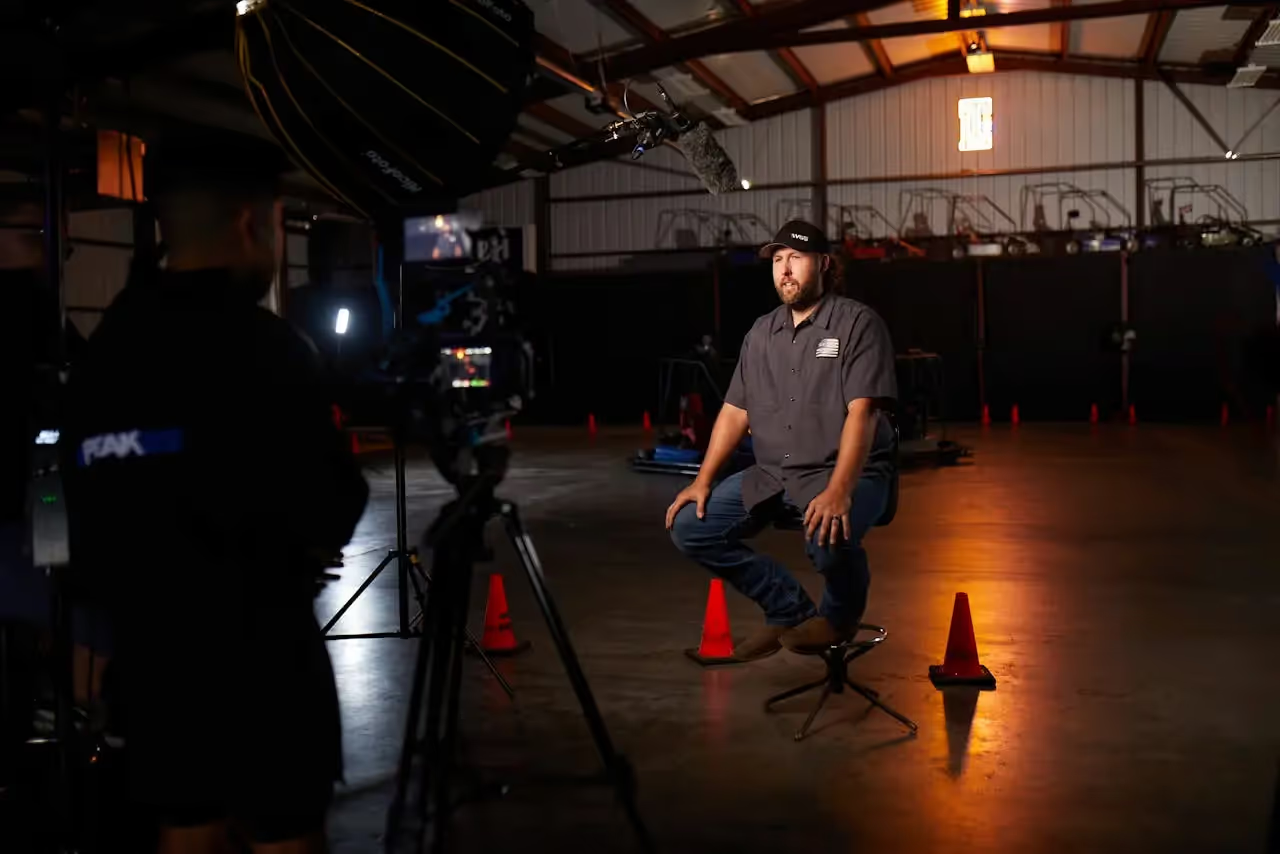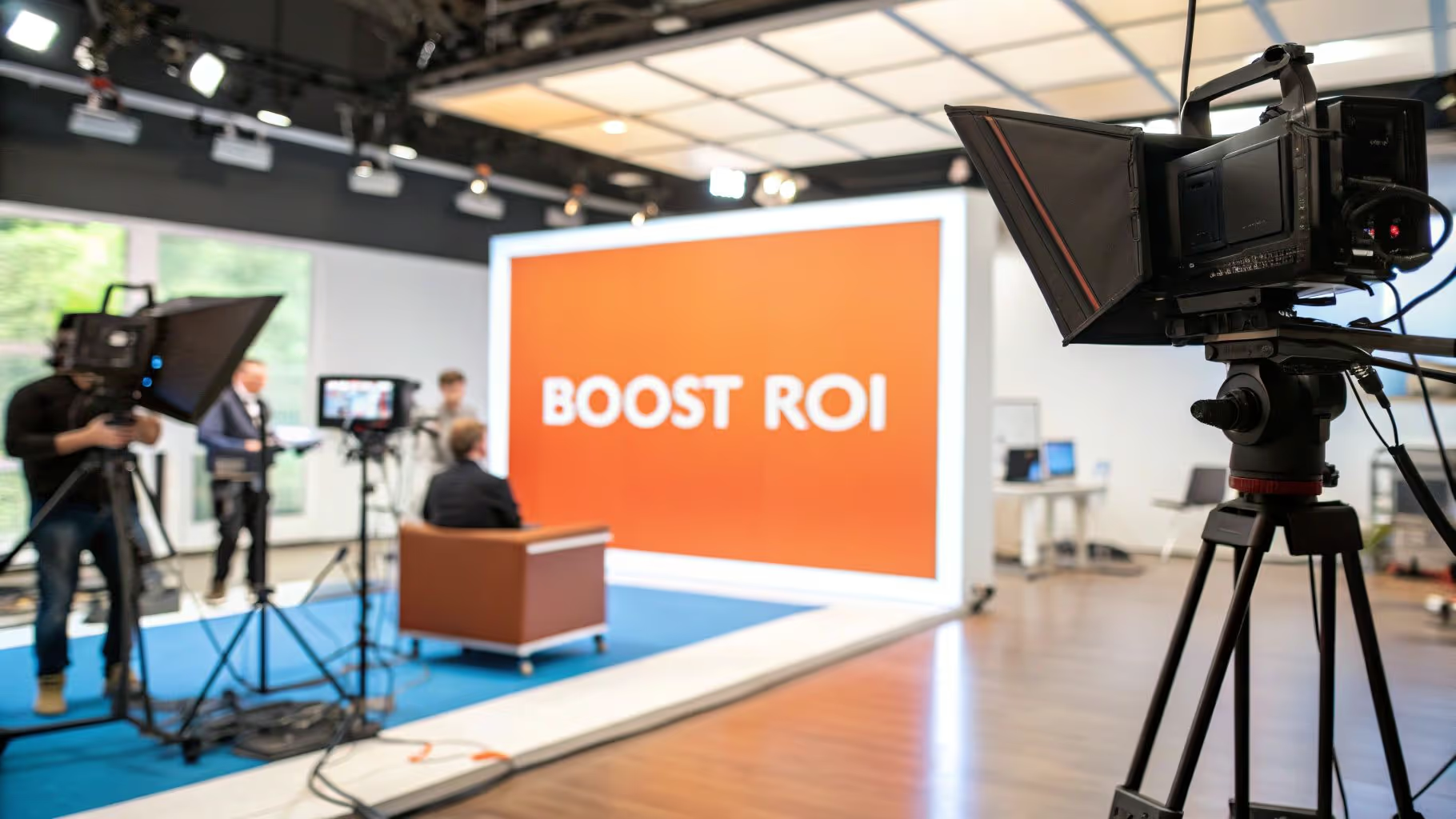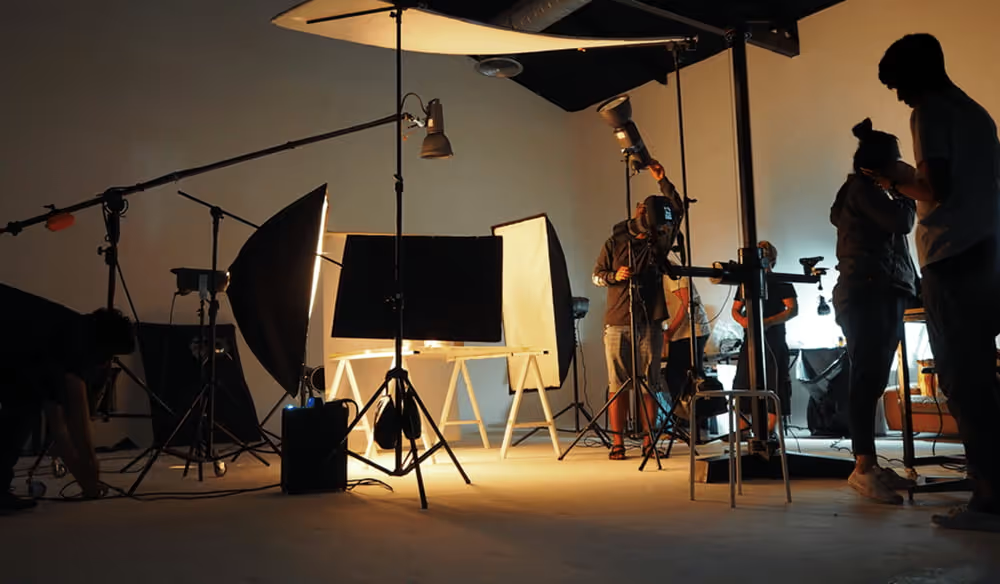Table of Contents
A strong corporate story is not built on flashy visuals or rehearsed lines. It’s built on people. Real stories, honest answers, and emotional details help your brand connect with viewers faster than any ad ever could. In corporate interview storytelling, it’s the genuine moments that matter most. A well-told experience from an employee, customer, or founder can do more than just inform, it can inspire trust and action.
At Get Camera Crew, we help brands film interviews that feel honest, warm, and unscripted. Our process is designed to remove stress, build comfort, and bring out real answers that feel personal but stay aligned with brand goals.
Build Trust First, Then Capture Emotion
Before any camera starts recording, it’s important to help the person feel safe, respected, and comfortable. Many people are not used to being in front of a camera, and some may feel nervous or unsure about what to say. If they feel rushed, judged, or overly directed, they will likely give short or safe answers. These may sound fine, but they don’t feel personal. When people are more relaxed, they start to speak more openly. They remember details, show emotion, and share real moments that feel genuine.
Helping someone feel at ease doesn't happen by accident. It comes from thoughtful preparation, a friendly approach, and creating an environment where they feel they are not being tested or judged. The goal is not to make the interviewee sound perfect, it’s to make them sound real.
Ways to help the interviewee feel safe and relaxed:
- Choose familiar locations, like their usual workspace or a quiet meeting room
- Spend time chatting before filming to ease nerves
- Let them speak in their own words, even if it’s not “perfect”
A confident and calm interviewee will share more honest thoughts and personal details. This makes the interview feel more natural and warm. These small actions go a long way in creating emotional depth and building trust with your audience. The result is a video that feels real and makes your brand more relatable. People don’t connect with perfect lines, they connect with real people.
Use STAR, but Keep It Personal
The STAR method is a common tool used to help people tell stories clearly. STAR stands for Situation, Task, Action, and Result. It helps guide someone through what happened, what they needed to do, what they actually did, and what came out of it. This structure works well in interviews because it keeps answers focused and easy to follow. However, there is a risk of making answers sound too formal or robotic if used too strictly. In corporate interview storytelling, you want more than just facts. You want emotion, personality, and human experience.
When using STAR in video interviews, it helps to add personal questions between each part. This helps the speaker go deeper and talk about what they were feeling during the experience. It turns a plain story into something that viewers can connect with on a personal level.
Tips to make STAR stories feel more human:
- Ask them to describe how they felt during each part
- Use follow-ups like “What were you thinking at that moment?”
- Let them talk about setbacks and lessons, not just results
When people speak from memory and emotion (not just facts) the story becomes more relatable. A mix of structure and feeling makes the video more memorable. Viewers not only understand what happened, but they also understand why it mattered to the person telling it. That is what turns a basic interview into real storytelling.
Make the Interview Feel Like a Conversation
Being on camera can feel strange for many people. Even those who are confident in meetings or presentations can feel stiff or unsure when a camera is pointed at them. One of the best ways to help someone feel more natural is to make the interview feel like a regular conversation. When it feels relaxed, the person speaks more freely. Their tone softens, their answers become more thoughtful, and they often share moments they might have held back in a formal setting.
To create this comfortable setting, it helps to keep things casual and friendly. Instead of asking the interviewee to speak directly to the camera, let them talk to someone just off-screen. This small change makes a big difference in how natural they sound and look. The goal is to create a space where people forget they are being recorded and focus on telling their story.
Ways to keep the interview tone relaxed and natural:
- Allow a few warm-up takes before recording final answers
- Use open-ended prompts like “Can you walk me through that?”
- React and nod while they speak to make it feel two-sided
When the interview feels more like a chat between two people, the answers become clearer, more emotional, and easier to connect with. It takes away the pressure of “getting it right” and instead encourages people to speak honestly. This makes the final video feel more human, which is exactly what viewers respond to.
Prepare, but Do Not Over-Script
Good preparation helps interviews run smoothly. But there is a difference between guiding someone and telling them exactly what to say. If a person is given a full script or is told to memorize answers, the result can feel stiff. Their voice may sound flat or unnatural, and the message might lose its meaning. On the other hand, giving people a few key topics or ideas helps them think ahead without making them sound rehearsed.
Before filming, it helps to share some light notes with the interviewee. This could include general topics, themes, or a few sample questions. It gives them space to gather their thoughts while still allowing for honest, in-the-moment answers during the shoot. The goal is to keep the conversation real and natural.
Ways to prepare without over-scripting:
- Share topics ahead of time, not full questions
- Write down 5 to 7 flexible talking points
- Prepare a few backup questions in case they get stuck
When interviewees are free to speak in their own words, they often say things that are more powerful than anything written in advance. Their tone sounds more personal, and their message feels more genuine. This approach helps create stronger emotional moments that connect better with viewers. A little planning goes a long way—but giving space for real expression makes the story shine.
Shoot With Flexibility and Empathy
Interviews do not always go exactly as planned—and that’s okay. Some of the most meaningful moments happen when the speaker shares something unexpected or takes the conversation in a new direction. If the production feels rushed or too strict, these honest moments can be lost. That’s why it helps to keep a flexible mindset. Give people space to express themselves, and avoid cutting them off if their story goes slightly off-topic. These moments often bring out the most emotion and make the video feel more real.
Being flexible also means making people feel comfortable in their environment. Filming in quiet, familiar places can help. Allowing time for breaks, warm-up takes, or even pauses during emotional answers makes the session feel more respectful. When people feel safe and unpressured, they are more likely to open up.
Ways to create a flexible and supportive filming environment:
- Pick quiet, relaxed locations where people feel at ease
- Film extra b-roll footage of the person working, walking, or thinking
- Keep the atmosphere friendly, not rushed
When the filming experience feels gentle and human, it creates better results. People feel seen and heard, which shows in how they speak and act on camera. Viewers notice this and respond to it. By being flexible and kind during the shoot, you help create stories that feel genuine, thoughtful, and full of heart.
Also read: How Law Firms Are Using Video for Client Education and Outreach
People Also Ask
What is the STAR method in interviews?
It stands for Situation, Task, Action, and Result. It helps organize a clear story, especially in workplace and experience-based interviews.
How can I make interviewees feel comfortable on camera?
Start with small talk. Use a soft tone. Film in a familiar place. Keep the setup simple and allow time to warm up before asking key questions.
What questions lead to authentic stories?
Open-ended questions like “Can you tell me what that moment felt like?” or “What was going through your mind?” often lead to deeper answers.
How do you film emotion-driven corporate interviews?
Create a calm, supportive setting. Ask real questions. Allow pauses and silence. Use follow-ups that invite emotion without pushing too hard.
Want Real Stories in Your Next Corporate Video?
The best corporate interview storytelling comes from real people, not scripts. When you build comfort, listen carefully, and allow honest answers to unfold, the results are powerful. Whether you're telling employee stories, customer success journeys, or leadership visions, genuine voices always win.
Need a video production partner that knows how to pull out real stories from real people? Work with Get Camera Crew—we specialize in producing interview-driven corporate videos that feel honest, clear, and professionally done.






